Yes, Scissors Are Required (Count 'em All 12!)
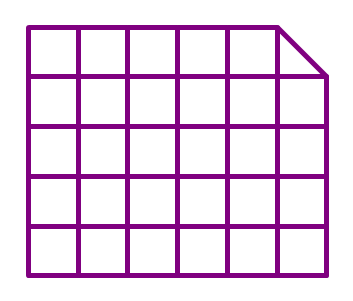
The figure above shows a 6 × 5 grid but with one of its corners cut off forming a triangle.
Count the total number of quadrilaterals in the grid above.
Clarification :
- A quadrilateral is a polygon that has 4 sides.
This is one part of Quadrilatorics .
The answer is 294.
This section requires Javascript.
You are seeing this because something didn't load right. We suggest you, (a) try
refreshing the page, (b) enabling javascript if it is disabled on your browser and,
finally, (c)
loading the
non-javascript version of this page
. We're sorry about the hassle.
3 solutions

Careful counting shows that the above figure with
6
columns and
1
row has
6
+
5
+
4
+
3
+
2
+
1
=
2
1
quadrilaterals.
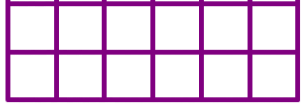
Careful counting shows that the above figure with
6
columns and
2
rows has
1
2
+
1
0
+
8
+
6
+
4
+
2
+
6
+
5
+
4
+
3
+
2
+
1
=
6
3
quadrilaterals.
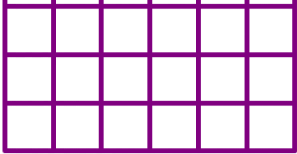
Careful counting shows that the above figure with
6
columns and
3
rows has
1
8
+
1
5
+
1
2
+
9
+
6
+
3
+
1
2
+
1
0
+
8
+
6
+
4
+
2
+
6
+
5
+
4
+
3
+
2
+
1
=
1
2
6
quadrilaterals.
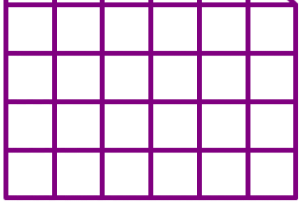
Careful counting shows that the above figure with
6
columns and
4
rows has
2
4
+
2
0
+
1
6
+
1
2
+
8
+
4
+
1
8
+
1
5
+
1
2
+
9
+
6
+
3
+
1
2
+
1
0
+
8
+
6
+
4
+
2
+
6
+
5
+
4
+
3
+
2
+
1
=
2
1
0
quadrilaterals.
So, the figure which follows the same pattern and has
6
columns and
5
rows(i.e. the figure without the cut) should have
3
0
+
2
5
+
2
0
+
1
5
+
1
0
+
5
+
2
4
+
2
0
+
1
6
+
1
2
+
8
+
4
+
1
8
+
1
5
+
1
2
+
9
+
6
+
3
+
1
2
+
1
0
+
8
+
6
+
4
+
2
+
6
+
5
+
4
+
3
+
2
+
1
=
[
(
2
1
×
5
)
+
(
2
1
×
4
)
+
(
2
1
×
3
)
+
(
2
1
×
2
)
+
(
2
1
×
1
)
]
=
[
2
1
×
(
5
+
4
+
3
+
2
+
1
)
]
=
[
2
1
×
1
5
]
=
3
1
5
Now, it has one edge cut, so all the quadrilaterals which includes the cut part as one of its edge would not be counted. But, in this process the number of quadrilaterals which have either 1 row or 1 column would not be counted, because they become trapezium which is a quadrilateral.
Careful counting shows that there are 4 0 such quadrilaterals which have the cut part as their edge. But we ca express one quadrilateral in two forms. For example, a ( 1 × 4 ) quadrilateral would co-incide with ( 4 × 1 ) quadrilaterals. So, all the 4 0 quadrilaterals are counted twice in rge process, so, the number of quadrilaterals which have to be excluded are 2 4 0 = 2 0
But, now we see that the cut edge forms a triangle, so that too have to be excluded.
So, the total number of quadrilaterals in the figure are
[
(
3
1
5
−
2
0
)
−
1
]
=
(
2
9
5
−
1
)
=
2
9
4
quadrilaterals.
□
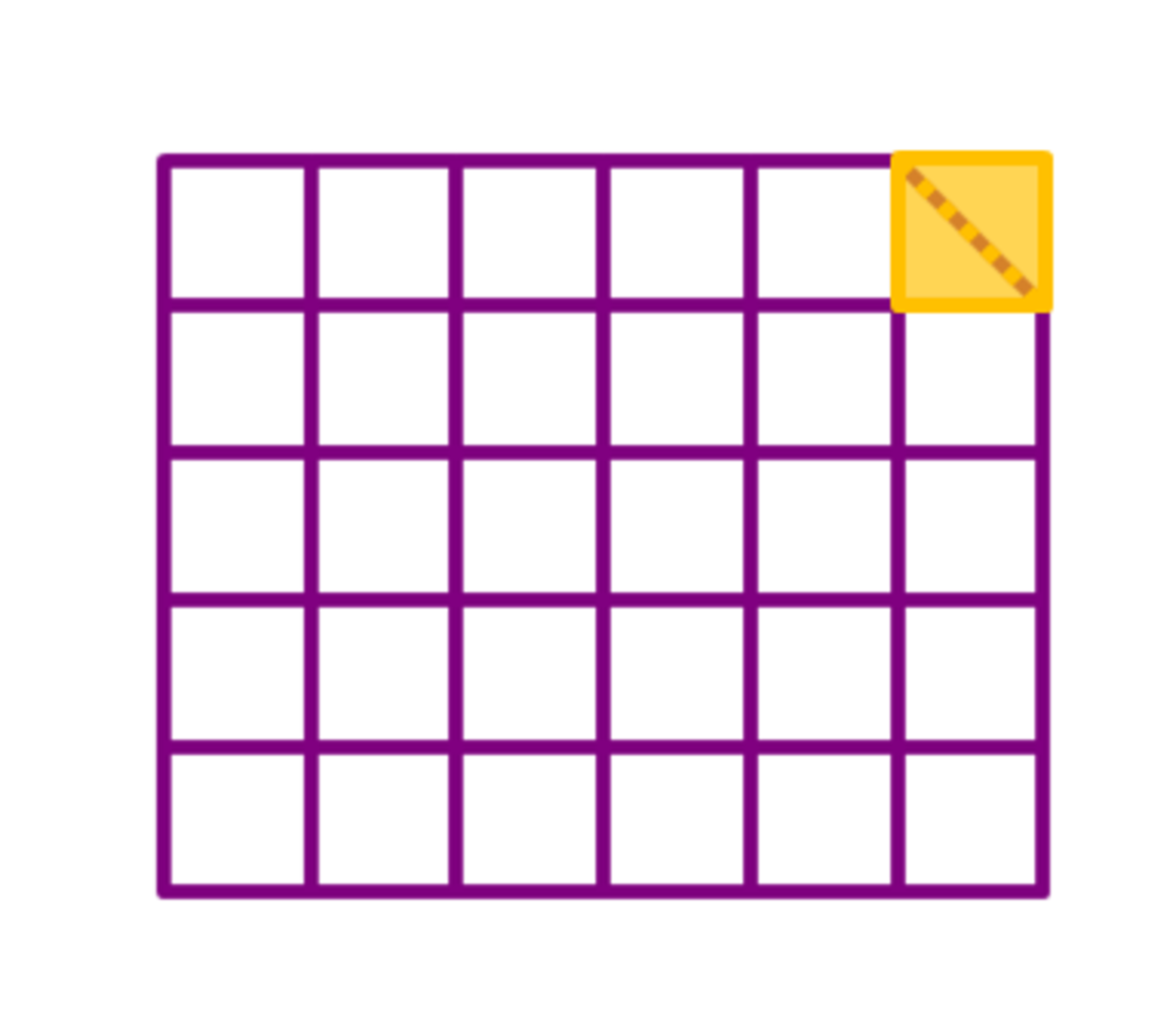
Let's pretend that the corner isn't cut and the grid is 'perfect'. I'll demonstrate this by patching the cut corner with a golden corner square.
From this note , we know that the number of quadrilaterals in this perfect grid is ( 2 7 ) × ( 2 6 ) = 4 6 × 5 × 7 × 6 = 3 1 5
But this grid isn't actually perfect, just like how our lives aren't perfect. When the corner is cut into a triangle, some quadrilaterals will turn into pentagons and some will turn into triangles. We need to deduct the number of soon-to-be pentagons and soon-to-be triangles from our current total.
But how can we know when a quadrilateral will turn into a pentagon or a triangle?
Notice that we can construct a quadrilateral by selecting a square as its top-right corner square, and selecting another square (possibly the same square) as its bottom-left corner square. For example, this is one of the quadrilaterals:
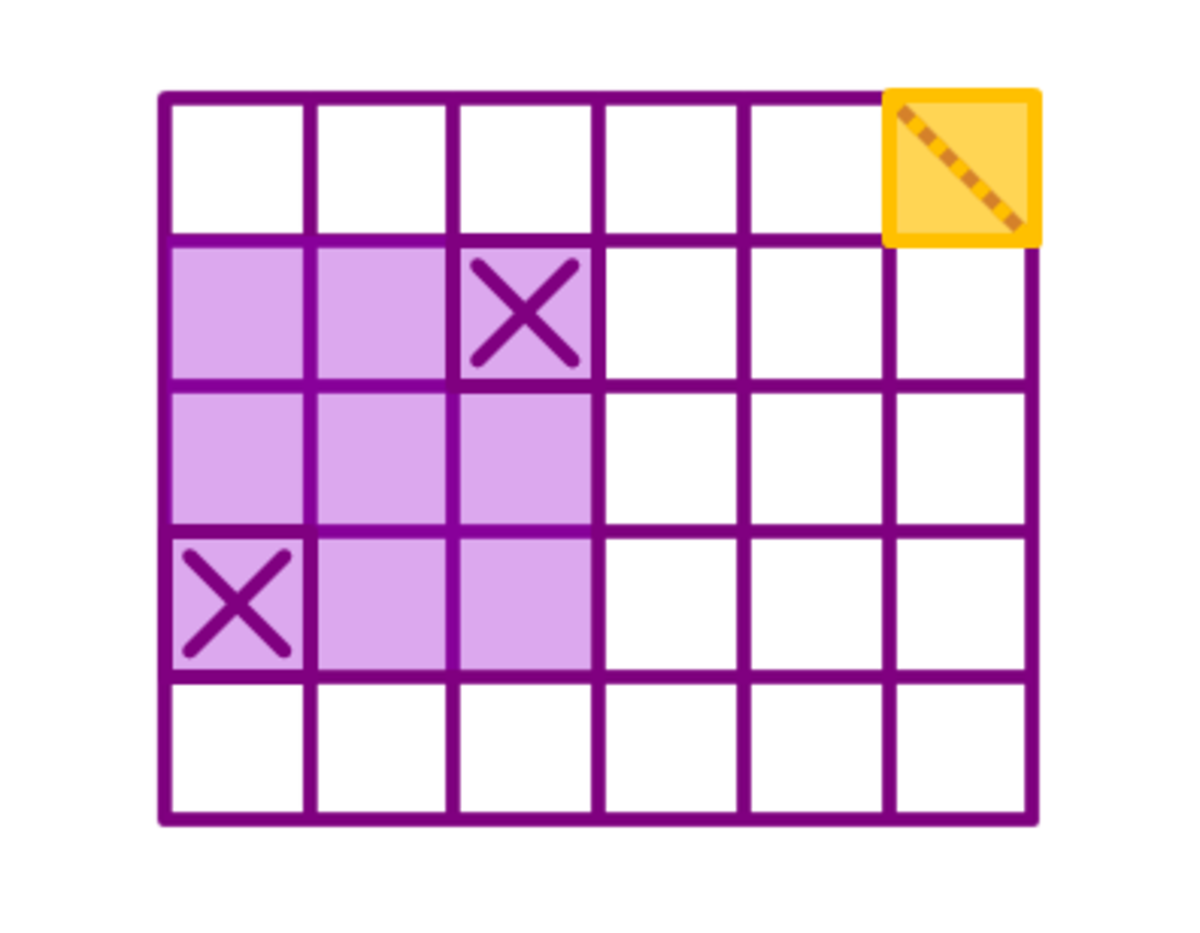
If a quadrilateral's top-right corner square lies on the golden corner square, and its bottom-left corner square is not on the same row or column as the golden corner square, then when the golden corner square is cut, this quadrilateral will turn into a pentagon.
The number of ways to choose a quadrilateral's bottom-left corner square when its top-right corner square is fixed on the golden corner square is ( 6 − 1 ) × ( 5 − 1 ) = 2 0
Thus when the golden corner square is cut, 2 0 of the quadrilaterals from the perfect grid will turn into pentagons.
On the other hand, it's not hard to realize that we also need to subtract 1 from the golden corner square itself, because it will be cut into a triangle.
Therefore, the number of quadrilaterals in the original grid is 3 1 5 − 2 0 − 1 = 2 9 4 .
In general, if an a × b grid has one of its corner cut off forming a triangle, then the number of quadrilaterals left in the grid is 4 a b ( a + 1 ) ( b + 1 ) − ( a − 1 ) ( b − 1 ) − 1
First we count the rectangles:
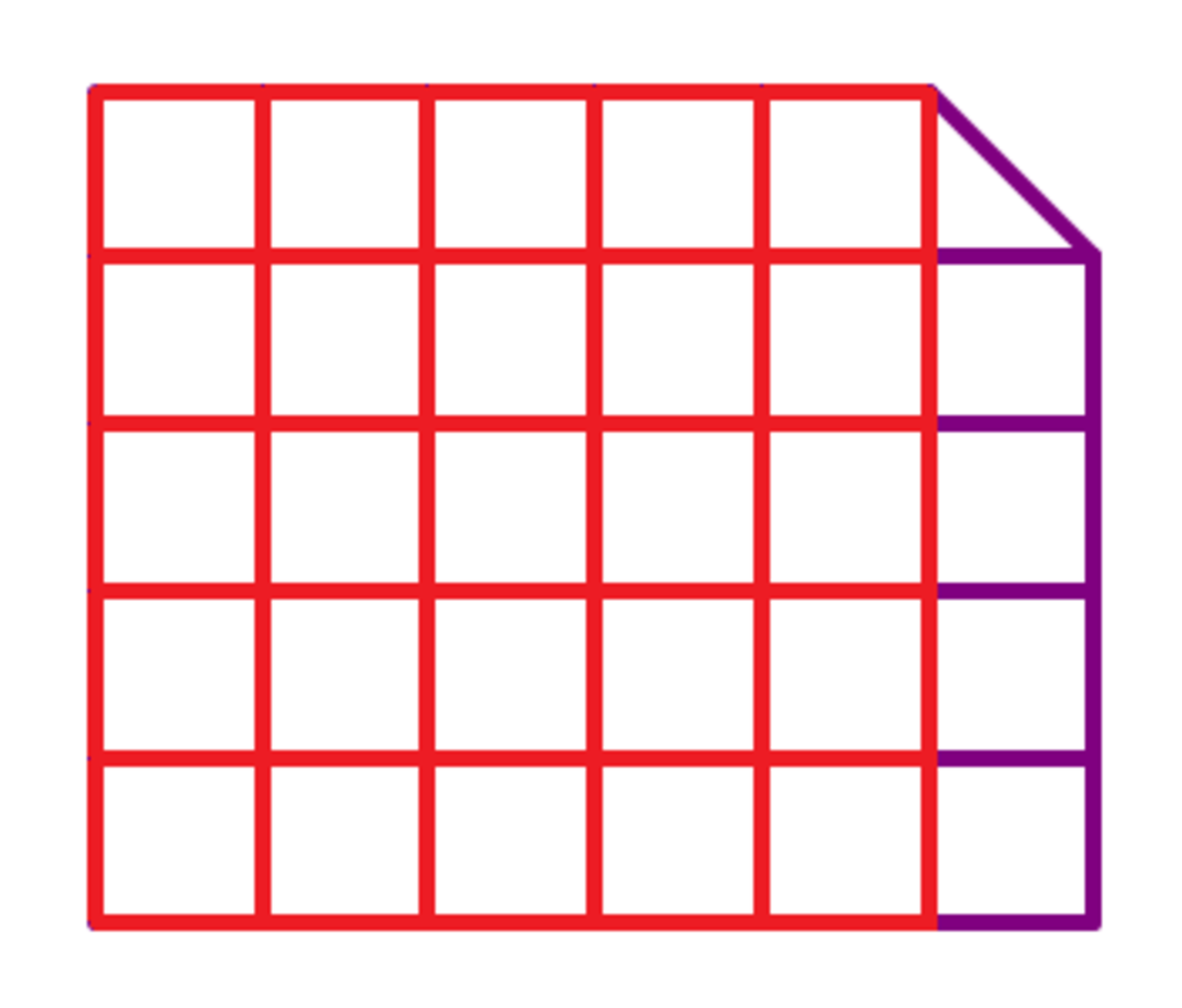
Red:
There are ( 2 6 ) × ( 2 6 ) = 2 2 5 of them.
Blue:
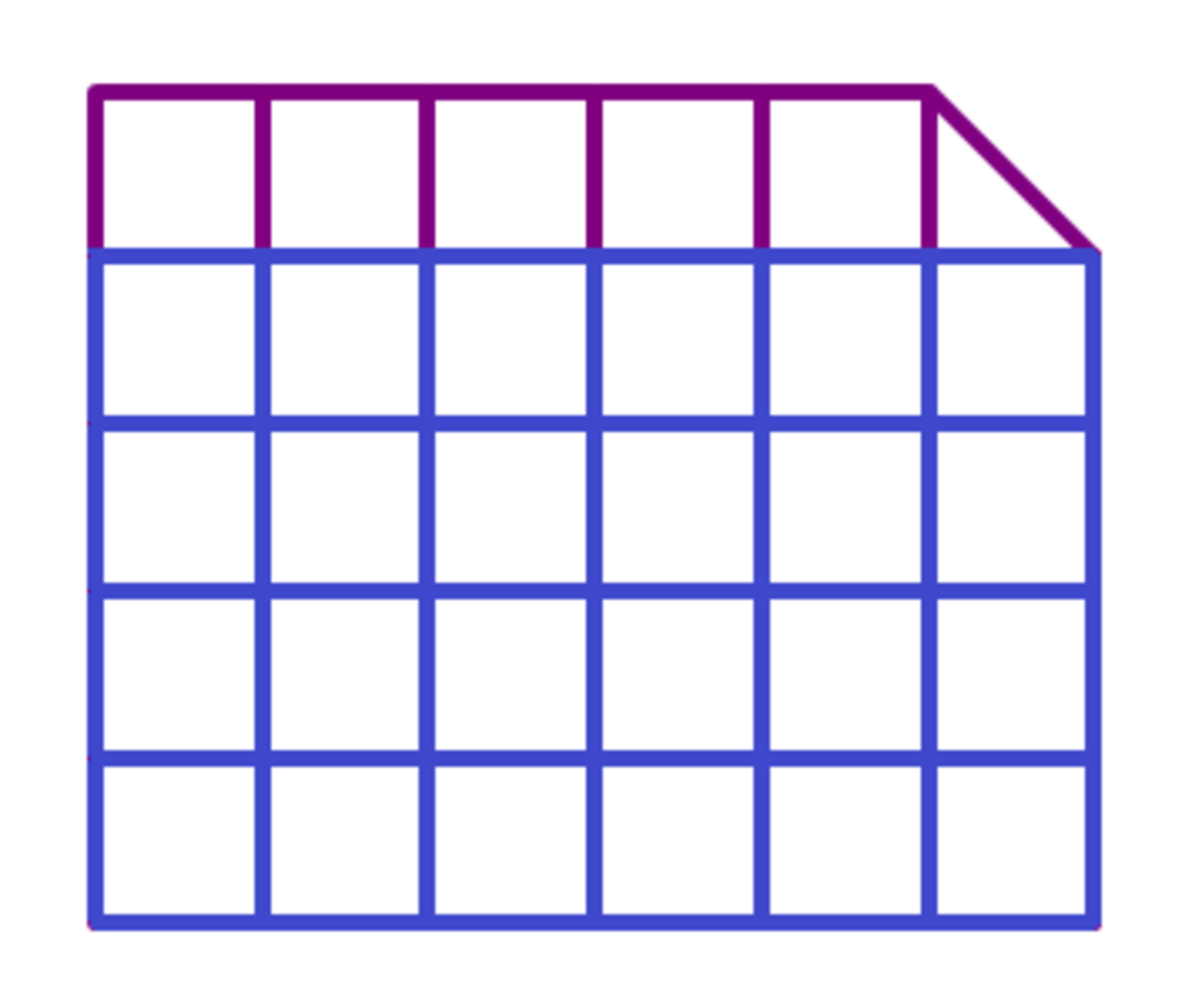
There are ( 2 5 ) × ( 2 7 ) = 2 1 0 of them.
Green are double counted:
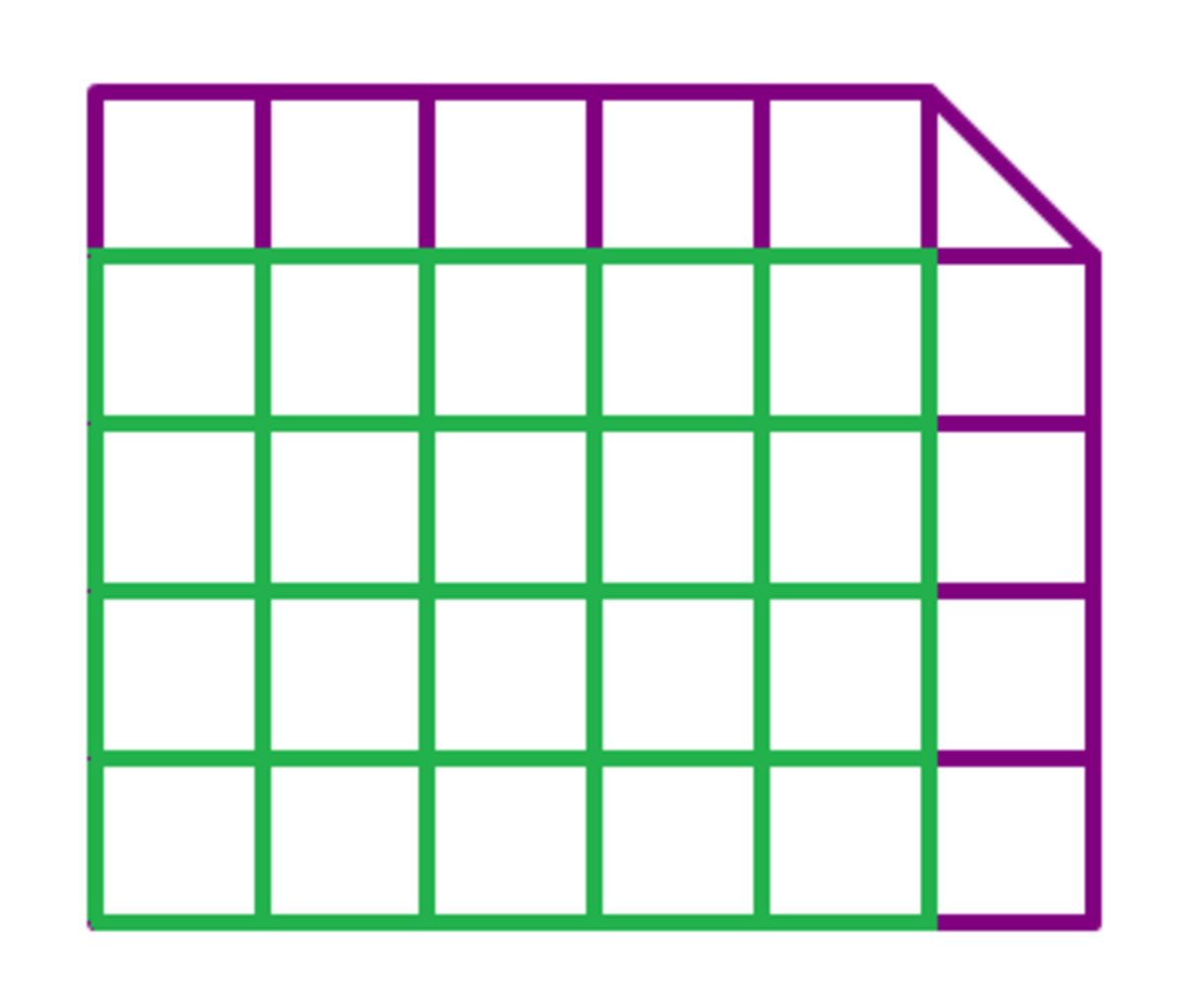
There are ( 2 5 ) × ( 2 6 ) = 1 5 0 of them.
Finally we count the 'trapeziums':
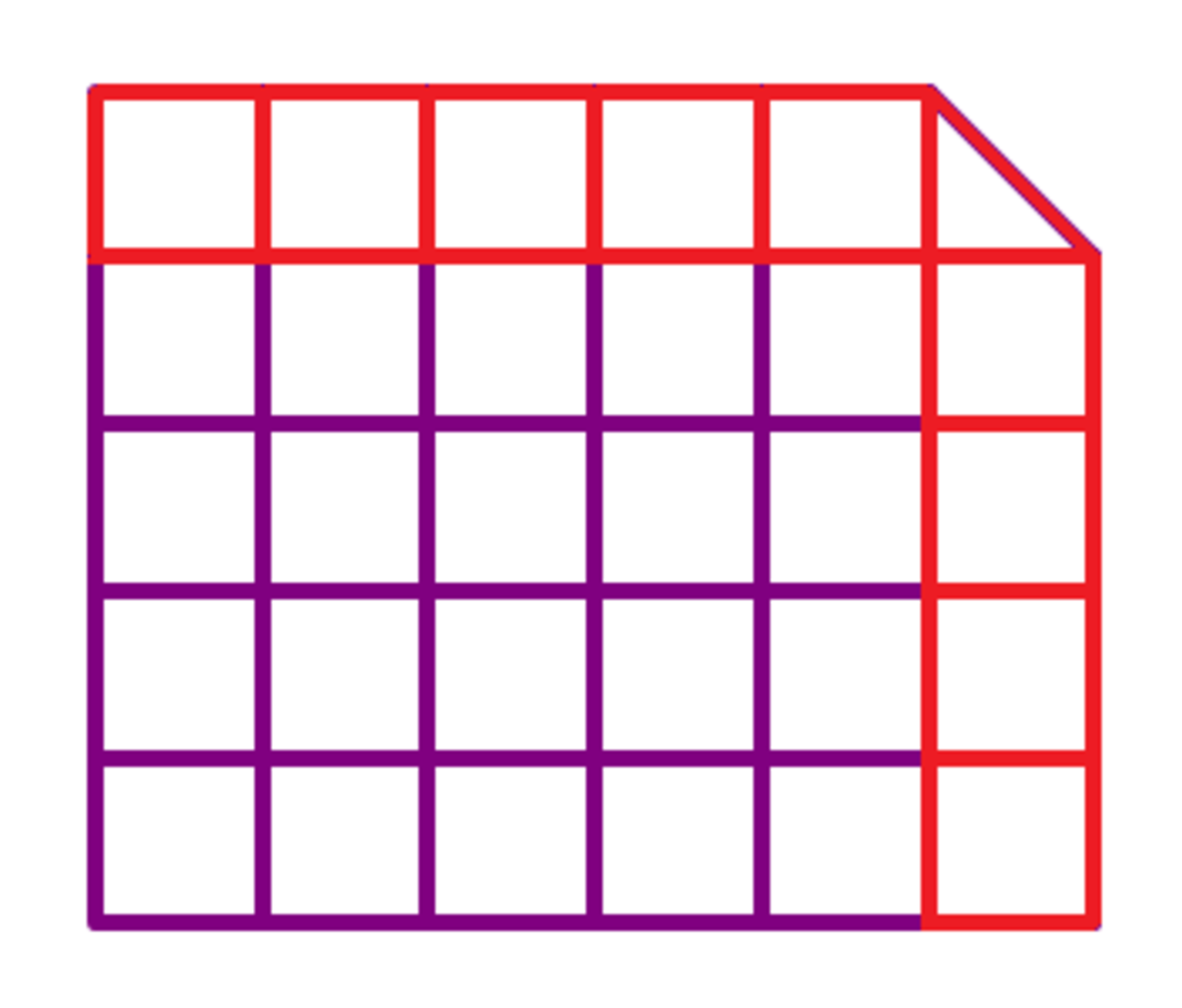
By counting, there are 9 of them.
Final answer: 2 2 5 + 2 1 0 − 1 5 0 + 9 = 2 9 4